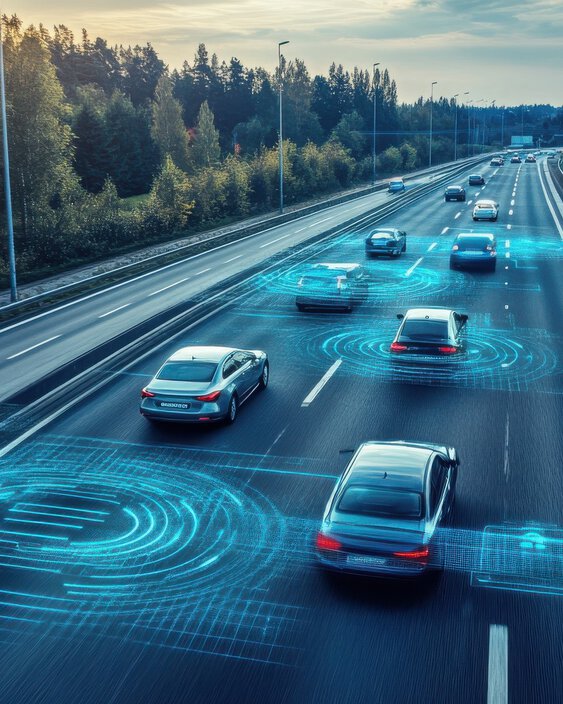
Autonomous vehicles
While technological progress and the introduction of parking assistants, distance regulators, lane departure warnings and braking assistants have already helped to ensure that cars are becoming increasingly safe, the arrival of autonomous vehicles is predicted to be the single greatest driver of change in the motor insurance line going forward.
Loading ...
With that said, the growing spread of driving assistance systems already brought a noticeable change to the sector. However, in the course of the next decades, the introduction and wider distribution of driverless cars has the potential to revolutionise motor insurance and to shake it to its foundations.
The degree of automation for vehicles can be distinguished by six levels (level 0-5):
- Level 0 – No driving automation
- Level 1 – driver assistance
- Level 2 – partial driving automation
- Level 3 – conditional driving automation
- Level 4 – high driving automation
- Level 5 – full driving automation
Personal cars are currently only available for purchase up to level 3, but transitioning vehicles for personal use to level 4 and 5 poses many challenges.
An increasing shift from manual driving towards autonomous driving will have significant impact on different business areas and of course also on the (re)insurance industry. In this context, (re)insurance companies will have to question their underwriting practices, evaluate their exposure and make necessary adjustments to their business models, corporate strategy and operations. Experts agree that the introduction of driverless cars will inevitably lead to increased safety on the roads. Automated and interconnected vehicles extensively supported by sensor technology greatly remove human error. Accidents will instead be caused either by a product defect or malfunction. Most of today’s minor damages caused by collision or rear-impact crashes could be avoided and thus the claims frequency would be reduced significantly. With regard to (re)insurance losses, it is very likely that an increased severity incurred in each accident will offset the potentially drastic reduction in accident frequency, given the greater likelihood of higher-priced vehicles with costlier technology that will come along with autonomous capabilities.
For a true transition to a population-wide uptake, car manufacturers for personal autonomous cars must address a series of challenges: On the one hand, autonomous vehicles are vulnerable to hacker attacks and, in extreme cases, could be used as coordinated remote-controlled weapons. On the other hand, digital maps must necessarily reflect reality more precisely than today to prevent driverless cars from accidentally leaving the road and colliding with other vehicles or the environment due to poor data quality. Furthermore, vehicles of any kind and of different manufacturers need to be able to communicate with each other within a few milliseconds. To make this possible, the capacity of comprehensive data networks needs to be significantly improved and data networks themselves must become much more resilient than today.
One of the key questions regarding the introduction of driverless vehicles will be: Who is responsible for an accident – the human or the machine or rather the manufacturer?
The question of liability addresses several stakeholders, especially regulators, legislators, manufacturers and of course (re)insurance companies – particularly when we are in the transition state of semi-autonomous vehicles. Meanwhile, governments have recognised the benefits of driverless vehicles and express their fundamental intent to address the liability question early in the evolution of automatic driving. While there will still be need for motor insurance in the future since there will still be accidents, it is likely that other types of insurance, such as commercial or product insurance coverages, will ultimately end up insuring risks that traditionally were covered by motor insurance.
Autonomous vehicle risks need to be accurately and realistically measured and understood and compared to appropriate benchmarks. The safe introduction of automated vehicles requires a direct recognition of the risks that the technology will encounter. Identifying and addressing these risks requires detailed datasets and risk management expertise. After identifying and quantifying the risks and their correlations, the risk-minimising introduction strategy requires the creation of a single, comprehensive approach that looks at the risk holistically and in total. Once a rollout strategy is developed, the technology’s performance must be understood. This requires the calculation of an accurate benchmark that the technology’s experience can be compared against.